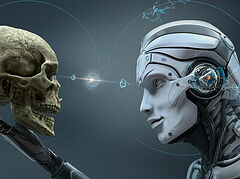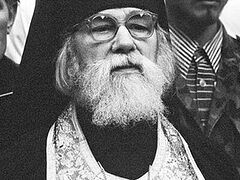There are about 90 billion neurons in the human brain. These are strictly specialized electrically excitable cells. They perform three main functions: to receive and transform stimuli from the external environment, process and store information, and regulate motor systems. A biological neural network is a sequence of neurons interconnected by synapses.
What are artificial neural networks (ANN)? In fact, they are a mathematical model that simulates the human brain’s work. It consists of many interconnected artificial “neurons” that process information and transmit it further across the network.
Artificial neural networks are used in many fields, including computer vision, natural language processing, recommendation systems, complex systems management and much more. They allow us to solve complex tasks quickly that otherwise would be too difficult—for example, to recognize images in a huge number of photos or translate texts from one language into another instantly.
However, unlike a human being who is a walking giant “zoo” of neural networks, artificial neural networks are strictly specialized systems consisting of one or more neural networks, depending on the task. For example, we need to recognize text in an image. For a human being, if he can read and has good eyesight, there is no problem here; but for a machine it is not easy. First it needs to find the text in the image. To do it ANN must first be taught to find text in an image. Here a human being is needed who will “feed” a specially marked data set to the neural network and Verify the results. As you see, ANN cannot do without humans. We can make neural networks self-learning and grow a sophisticated “monster”, but nevertheless still relatively strictly specialized.
Today there are several families of neural networks:
1. Convolutional: designed for image analysis and processing. They are usually used for image recognition tasks, image classification, object detection, and even video analysis.
2. Recurrent: designed to work with sequential data, such as texts, speech, and time series. They have feedback between neurons, which allows them to take into account the context and data dependencies.
3. Generative: used to generate new data by simulating the distribution of training data. One of the best known applications of GAN (the Generative Adversarial Network) is the generation of realistic images. The network consists of two parts: a generator that produces data and a discriminator that evaluates its realism. The training takes place in the process of competition between these two parts.
4. Transformers: a relatively novel type of neural network used for natural language processing and other tasks. They are widely used in machine translation, text generation, chatbots and many other applications.
Artificial neural networks are developing every minute. There are more and more of them, they are becoming ever more effective. They will not only help people or provide entertainment—they also will bring a lot of evil. It’s inevitable. We recall the saying about an axe, which you can use to chop firewood but also to kill people… They are already causing a lot of problems.
However, the irony is that an ordinary alcoholic with wire cutters in his hands is still stronger than any advanced artificial neural network: he can easily hit on the idea of cutting the wires supplying energy to a computer with ANN…
Have you ever heard of deepfakes? They are a product of ANN at the suggestion of dishonest people. Such things have been done before, but only manually, with the help of talented artists or film cuts. I mean fake videos and audios, where well-known media personalities appear before us and talk nonsense with their voices. In the very near future we will need to be very sober-minded and be able to think critically so as to filter such information. As it is today, in the future we will have to check information more thoroughly, search for primary sources and check official information channels before trusting, and even more so distributing any information. For example, “Is it true that the Patriarch has abolished the fasts and had the Church services translated into modern Russian?”, or “Is it true that the President has ordered everyone to accept e-passports and digital rubles?”
Neural networks, as already mentioned, are strictly specialized. Is it possible to create a supernet that will be able to do almost everything? I think yes. Although it will not be a neural network, but a super-“zoo” of neural networks communicating with one another. One neural network will recognize, another will generate ideas, the third will make decisions, etc. At present, the problem is only in computing, power supply capacities, and cooling. A separate nuclear power plant will be needed to “feed” this monster. Neural networks consume quite a lot of energy compared to our brain. True, more energy-efficient spiking neural networks and energy-efficient neuromorphic chips for them have already appeared. But, again, it all depends on mankind. If we give the supernet the rights and powers—and a machine a priori does not and will never have a soul, conscience and morality—it will make exclusively rational decisions with all the ensuing consequences.
When should we start being afraid? It’s too late: the future is already here. It’s like discovering and only just beginning to be afraid of nuclear power plants or smartphones. They already exist, they are among us! And, generally speaking, they bring a lot of good. For example, ANN cope perfectly well with the task of diagnosing certain diseases at an early stage from images; neural networks make road traffic safer thanks to the introduction of the machine (computer) vision systems in cars; and the list goes on.
Actually, the more people and countries have this technology the safer the world is. For now, it’s just a good tool. In addition, we should realize that artificial neural networks will never gain self-awareness, but will always remain a mere tool. It is much worse when only one country receives some super-technology and then drops it on the heads of the inhabitants of two Japanese cities...





